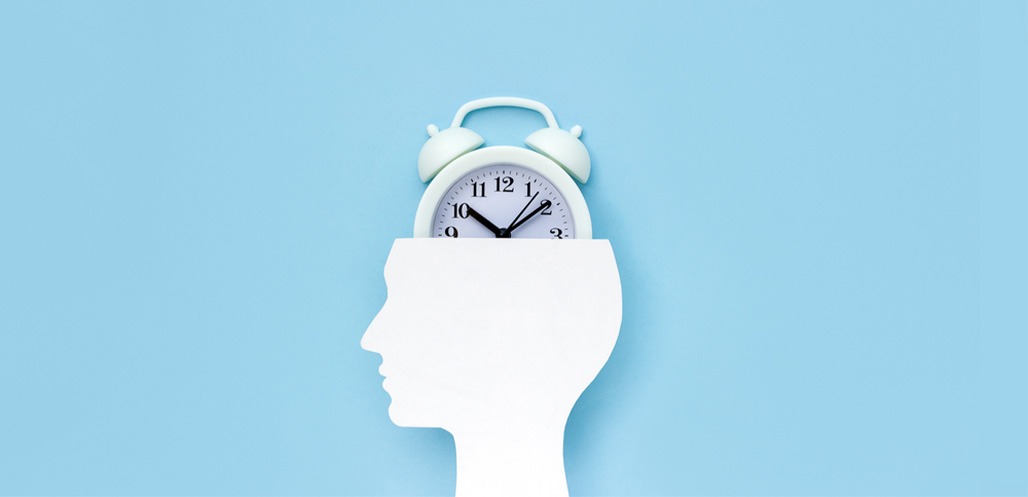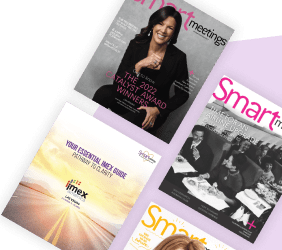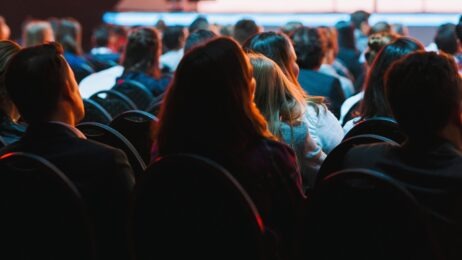How to build a schedule that works with human circadian rhythms
When you schedule a presentation can be as important as what you include. Human attention spans naturally fluctuate throughout the day, and trying to fight built-in rhythms is like trying to overcome gravity. Nature almost always wins. But if you work with the tendencies that dictate your ability to focus, you will be more likely to leave everyone smiling.
Download the Managing Attendee Energy White Paper
Follow the Sun
Celebrity neuroscientist and podcaster Andrew Huberman points out that our internal circadian rhythm is the engine behind our sleep-wake cycle. It is governed by light exposure. But not all light exposure is equal. Morning light—especially the first natural light of the day—is a powerful wake-up signal due to the ratio of blue light to yellow light that is unique to sunrise and sunset. Additionally, outdoor light exposure can be upwards of ten times brighter than the brightest indoor lighting, creating a much stronger synchronization between your internal clock and the time of day.
Exposure to bright light, particularly blue light from screens and overhead lights at night, will lead to circadian disruption. Jet lag and an inconsistent sleep schedule cause a misalignment between the light levels hitting the photoreceptors in our retinas and the body’s other biological signals for sleepiness including increased melatonin levels and a decrease in body temperature.
Read More: Eudemonia Summit: Inaugural Wellness Conference Optimized Attendee Interaction
Optimizing Attendee Energy
Dr. Jessica Garza, who holds a Ph.D. in performance psychology, a master’s in clinical mental health and a master’s in sport-exercise psychology, is a TED speaker and has worked with professional athletes, congressional staff, FBI, CIA and US Special Forces to develop mental readiness, emotional intelligence and self-confidence to optimize their potential both on a personal and professional level. She is a fierce advocate for optimizing energy resources by considering human circadian rhythms.
She combined the science behind natural rhythms with The Eisenhower Matrix, a time-management framework that helps people prioritize tasks based on urgency, to help meeting professionals design schedules based on cognitive peaks. “These frameworks empower planners to conserve energy resources while enhancing productivity and participant satisfaction,” she said.
Read More: Heart and Mind: Up the Energy Quotient
Garza points out that morning is the best time for physical exercises such as running. It is also when audiences will have the most conscious awareness and engagement. “Any of your big, important talks or meetings should be scheduled from about 9 a.m. to 11 a.m.,” she said.
Organizers who really want to engage attendees know to start by having attendees jump up and down, sing, dance or shout. Even if you have to plant a few people to start the jumping, the “bandwagon effect” will spread the behavior throughout the ballroom. That raises the heart rate and gets everyone aligned with the energy in the room. Call it the “Tony Robbins approach” to energy enhancement. This collective consciousness-building where everyone is on the same frequency magnifies the focus and messaging.
Afternoon Slump, Begone!
At lunchtime, the postprandial dip—a drop in blood pressure that can occur after eating a large meal—causes brains to get foggy, a condition known as the “afternoon slump” or “food coma.”
It’s not all bad news, however. Pitching information you know very well over a lunch break when your companion is less engaged will make them more likely to say yes. “But they might have buyer’s remorse around 4:00,” Garza warned with a smile.
After lunch, during the body’s maintenance time, some physical activity or sensory activation could help people wake up during what is typically a low-alertness time of day. “If you must have a session during that time, find a speaker who is energetic, loud and includes hands-on kinesthetics for all different learning styles to get people to get engaged,” Garza said.
Garza cautions against using caffeine to counter this natural tendency, because doing so can impact sleep later, which plays an important role in the brain’s ability to convert short-term memory to long-term memory. It’s when the mind consolidates all the information it has learned during the day at the conference. The afternoon lull could be an opportunity to allow people to return to their rooms for a quick nap or time to regroup. Garza explained that some people need to practice “energetic hygiene” because being around so many people can be mentally and emotionally exhausting and time away can help these attendees reset.
Garza also warns that drinking alcohol can impact quality of sleep, keeping attendees out of the critical REM stage and hindering their ability to recall information and show up ready to learn the next day.




